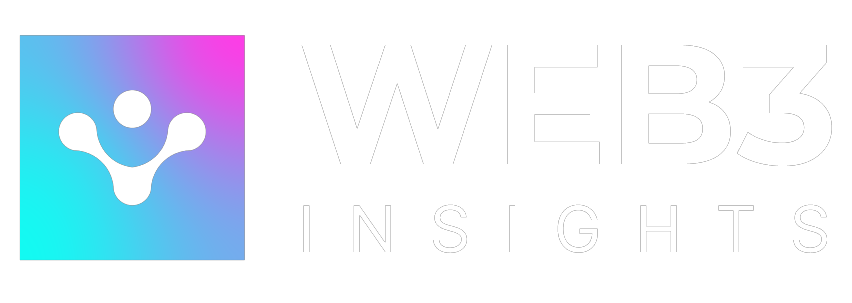Solana has quickly become one of the most promising blockchain ecosystems, offering high-speed transactions, low fees, and an expanding network of decentralized applications. With its proof-of-stake (PoS) consensus mechanism, Solana enables users to earn rewards simply by holding and staking SOL tokens. But while staking can be an easy way to generate passive income, many people fail to optimize their rewards or underestimate the risks involved.
Whether you’re new to Solana staking or looking to refine your strategy, this guide will walk you through everything you need to know. From selecting the best validators to compounding your rewards and avoiding potential pitfalls, you’ll learn how to stake SOL efficiently and maximize your earnings with confidence.
Why Staking on Solana is a Game-Changer?
If you’re holding SOL and not staking, you’re leaving money on the table. Solana’s unique proof-of-stake (PoS) mechanism allows you to earn passive income with some of the lowest fees and fastest transactions in the crypto space. But staking isn’t just about setting it and forgetting it, you need a smart strategy to maximize rewards while minimizing risks.
Staking plays a crucial role in maintaining the Solana network’s security and decentralization. By participating in staking, you contribute to the validation of transactions and governance of the network while earning rewards in return. Given Solana’s high-speed transactions and efficient design, staking SOL can be one of the most profitable ways to grow your holdings if done correctly.
How Solana Staking Works
Unlike traditional finance where banks pay you minuscule interest, staking on Solana means delegating your SOL to validators who help secure the network. In return, you earn staking rewards. Here’s a simplified process:
- Choose a Validator: Validators are responsible for processing transactions and maintaining the blockchain’s integrity.
- Delegate Your SOL: Once you select a validator, you delegate your SOL tokens to them, which means your stake contributes to their validation power.
- Earn Rewards Automatically: Validators receive rewards for securing the network, and a portion of these rewards is distributed to the delegators.
The key benefit of staking is that your SOL remains in your wallet while you delegate, meaning you maintain ownership of your assets while earning passive income. The staking yield on Solana fluctuates depending on network conditions, validator performance, and protocol updates, so staying informed is crucial.
Maximizing Your Staking Rewards
Want to boost your staking returns? Here’s what you need to do:
1. Pick the Right Validator
Not all validators are created equal. Some have higher commission fees, while others may have unreliable uptime, impacting your rewards. When choosing a validator, consider the following:
- Commission Rate: Validators take a percentage of your rewards as their commission. Lower commission rates mean you keep more of your earnings, but sometimes lower rates can indicate a less experienced validator.
- Performance History: A validator with frequent downtime or poor reliability can lead to lost rewards. Check validator performance on Solana staking dashboards before committing.
- Decentralization Contribution: Staking with smaller validators helps maintain the decentralization of the Solana network, preventing the over-concentration of power with a few large validators.
Diversifying your stake across multiple validators can also reduce risks and help maintain network security.
2. Reinvest Your Rewards
Compounding is key. Instead of withdrawing rewards immediately, consider redelegating them to increase your overall staking balance. Over time, this can lead to exponential growth in your staking returns.
Many wallets allow for automatic redelegation, streamlining this process and making it easier to maximize your earnings with minimal effort.
3. Stay Updated on Staking Trends
Solana’s staking landscape is constantly evolving. Protocol upgrades, validator performance shifts, and new staking opportunities can all impact your earnings. Follow on-chain analytics and validator dashboards to make informed decisions.
One key aspect to monitor is the inflation rate of SOL, which influences staking yields. As the network matures, changes in staking participation and inflation parameters could affect the rewards distribution.
Minimizing Risks While Staking
Staking isn’t risk-free, but you can protect yourself with these strategies:
1. Avoid Slashing Risks
Although slashing (the loss of staked assets due to validator misbehaviour) is not common on Solana, it is always best to stake with validators who have a proven track record of reliability and ethical operation. By choosing well-established validators with high uptime and no history of penalties, you can reduce your risk.
2. Use a Secure Wallet
Stake directly from non-custodial wallets like Phantom, Solflare, or Ledger to maintain full control over your assets. Using non-custodial wallets ensures that you retain ownership of your SOL while benefiting from staking rewards. Avoid centralized exchanges for staking, as they may offer lower yields and introduce third-party risks.
3. Monitor Validator Performance
A validator with frequent downtime can negatively impact your staking rewards. Regularly check validator status using Solana staking analytics tools to ensure your chosen validator remains performant. If you notice persistent downtime or performance issues, consider redelegating your stake to a more reliable validator.
Additionally, be wary of validators with extremely high yields or unsustainably low fees, as they may not be operating ethically or could be engaging in practices that could lead to instability.
Best Tools for Solana Staking Analytics
Here are some must-use platforms to track performance and optimize your staking strategy:
- Solana Beach: A comprehensive dashboard for validator insights, staking trends, and network statistics.
- Solscan: Provides real-time staking data, transaction history, and blockchain insights.
- Validators.app: A detailed validator ranking tool showing commission rates, uptime, and delegation trends.
- StakeView.app: A great tool to analyze staking rewards and track validator performance over time.
Using these tools, you can compare validators, track your earnings, and adjust your staking strategy based on the latest data.
Final Thoughts: Is Staking on Solana Worth It?
Absolutely! if you do it right. With fast transactions, low fees, and strong security, Solana staking offers one of the best risk-reward balances in crypto. But success lies in choosing the right validator, compounding rewards, and staying informed.
Staking is one of the most accessible ways to earn passive income in the Solana ecosystem while actively supporting network security and decentralization. By taking a strategic approach; choosing reliable validators, reinvesting rewards, and keeping an eye on the evolving landscape, `you can maximize your returns while mitigating risks.
Are you staking your SOL yet? If not, now’s the time to start earning passive income while helping secure the network. Choose wisely, stake smartly, and watch your SOL grow!








